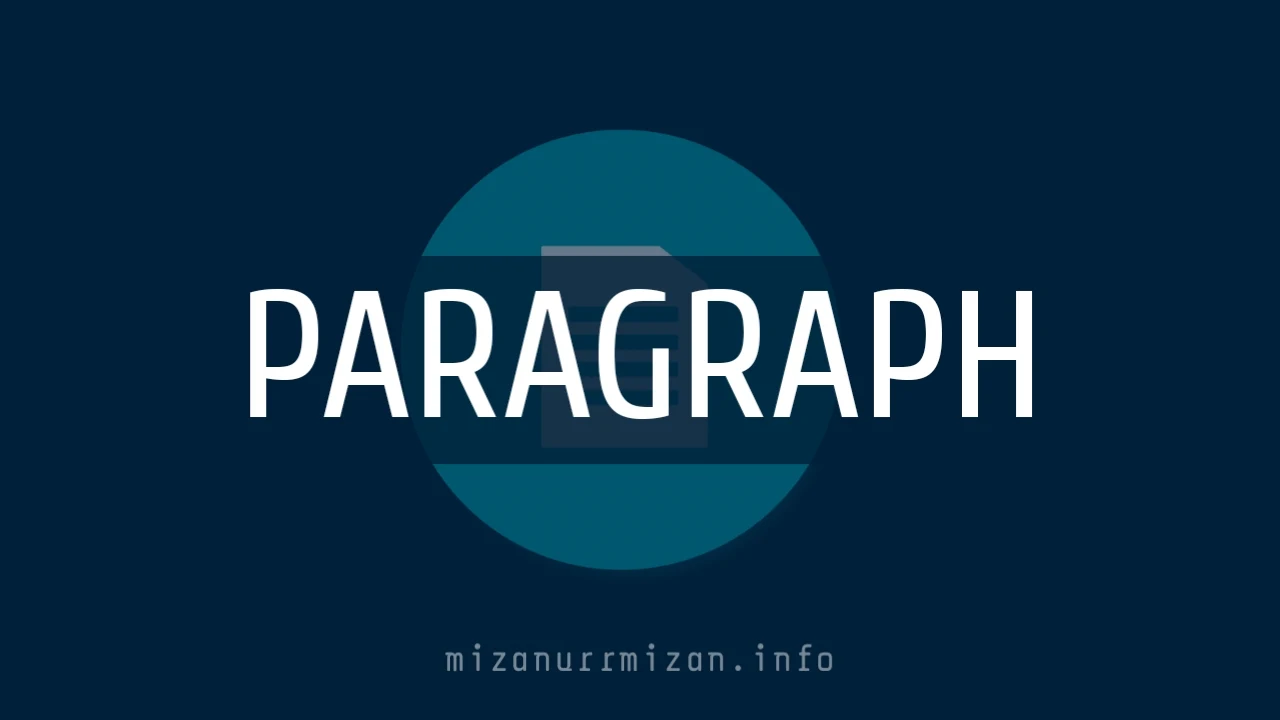In writing, paragraphs serve as the building blocks of coherent and structured composition. Understanding what constitutes a paragraph and its essential components is pivotal for effective communication and expression. This article aims to delve into the definition of a paragraph, its significance, and the components that make up its anatomy.
What is a Paragraph?
A paragraph is a distinct section of a piece of writing that contains one or more sentences focused on a single idea or topic. It is characterized by a beginning indentation, coherent development of a central point, and often concludes with a summarizing or transitional sentence. Essentially, paragraphs serve as organizational units that facilitate the organization and flow of ideas within a written work.
Significance of Paragraphs
The significance of paragraphs lies in their role in enhancing readability, comprehension, and organization within written text. By breaking down content into manageable segments, paragraphs provide structure and coherence, enabling readers to navigate through the text effortlessly. Additionally, paragraphs contribute to the logical progression of ideas, guiding readers through the author's thought process and facilitating understanding.
Components of a Paragraph
A well-constructed paragraph consists of several essential components, each contributing to its clarity, coherence, and effectiveness in conveying the intended message. Let's explore these components in detail:
1. Topic Sentence
The topic sentence serves as the foundation of the paragraph, articulating the main idea or central point that the paragraph intends to convey. It provides readers with a clear understanding of the paragraph's focus and sets the tone for the subsequent sentences. A well-crafted topic sentence is concise, specific, and directly relates to the overall theme or argument of the written work.
2. Supporting Details
Following the topic sentence, the paragraph should include supporting details, examples, evidence, or elaboration that bolster and expand upon the central idea. These supporting elements provide depth and context, helping to clarify the main point and reinforce the author's argument or narrative. Effective paragraphs often include relevant facts, statistics, anecdotes, or quotations to substantiate the claims made in the topic sentence.
3. Coherence and Unity
Coherence and unity are fundamental principles that govern the structure and organization of paragraphs. Coherence refers to the logical connection and flow of ideas within the paragraph, ensuring that each sentence contributes to the overall theme and progression of thought. Unity, on the other hand, entails maintaining focus on the central idea throughout the paragraph, avoiding irrelevant or tangential information that may distract the reader.
4. Transition Words and Phrases
Transition words and phrases play a crucial role in facilitating the smooth transition between sentences and paragraphs, guiding readers from one idea to the next. These transitional devices help maintain coherence and clarity by signaling shifts in thought, indicating relationships between ideas, and reinforcing the overall structure of the text. Common transition words and phrases include "however," "moreover," "in addition," "on the contrary," and "furthermore."
5. Concluding Sentence
The concluding sentence serves as the closure of the paragraph, summarizing the main point or reiterating its significance in relation to the broader context of the writing. It provides a sense of closure to the paragraph while also serving as a bridge to the subsequent paragraph, establishing continuity and cohesion within the text.
Example of a Well-Constructed Paragraph
To illustrate the components of a well-constructed paragraph, consider the following example:
Topic Sentence: The proliferation of social media platforms has revolutionized the way people communicate and interact in the digital age.
Supporting Details: With the advent of platforms such as Facebook, Twitter, and Instagram, individuals now have unprecedented access to instant communication and information sharing. These platforms facilitate real-time connections and enable users to engage in a variety of online activities, including networking, content creation, and community building.
Coherence and Unity: By harnessing the power of social media, individuals can amplify their voices, share experiences, and mobilize for social and political causes on a global scale. However, the pervasive use of social media also raises concerns about privacy, digital identity, and the spread of misinformation.
Transition Words and Phrases: Despite these challenges, social media remains a transformative force in shaping contemporary society. Moreover, its influence extends beyond personal communication to encompass business, politics, education, and culture.
Concluding Sentence: In conclusion, the impact of social media on communication and societal dynamics cannot be overstated. As technology continues to evolve, it is imperative that we navigate the complexities of social media with mindfulness and critical awareness.
[A PARAGRAPH MUST BE IN A SINGLE SECTION WITHOUT BREAKING IN PARTS.]
Conclusion
Paragraphs serve as the fundamental building blocks of effective writing, providing structure, coherence, and clarity to the text. By understanding the components of a well-constructed paragraph, writers can enhance the readability and impact of their writing, engaging readers and conveying their ideas with precision and eloquence. As such, mastering the art of paragraph construction is essential for aspiring writers and communicators seeking to convey their thoughts and ideas effectively.


Post a Comment
Write you think.